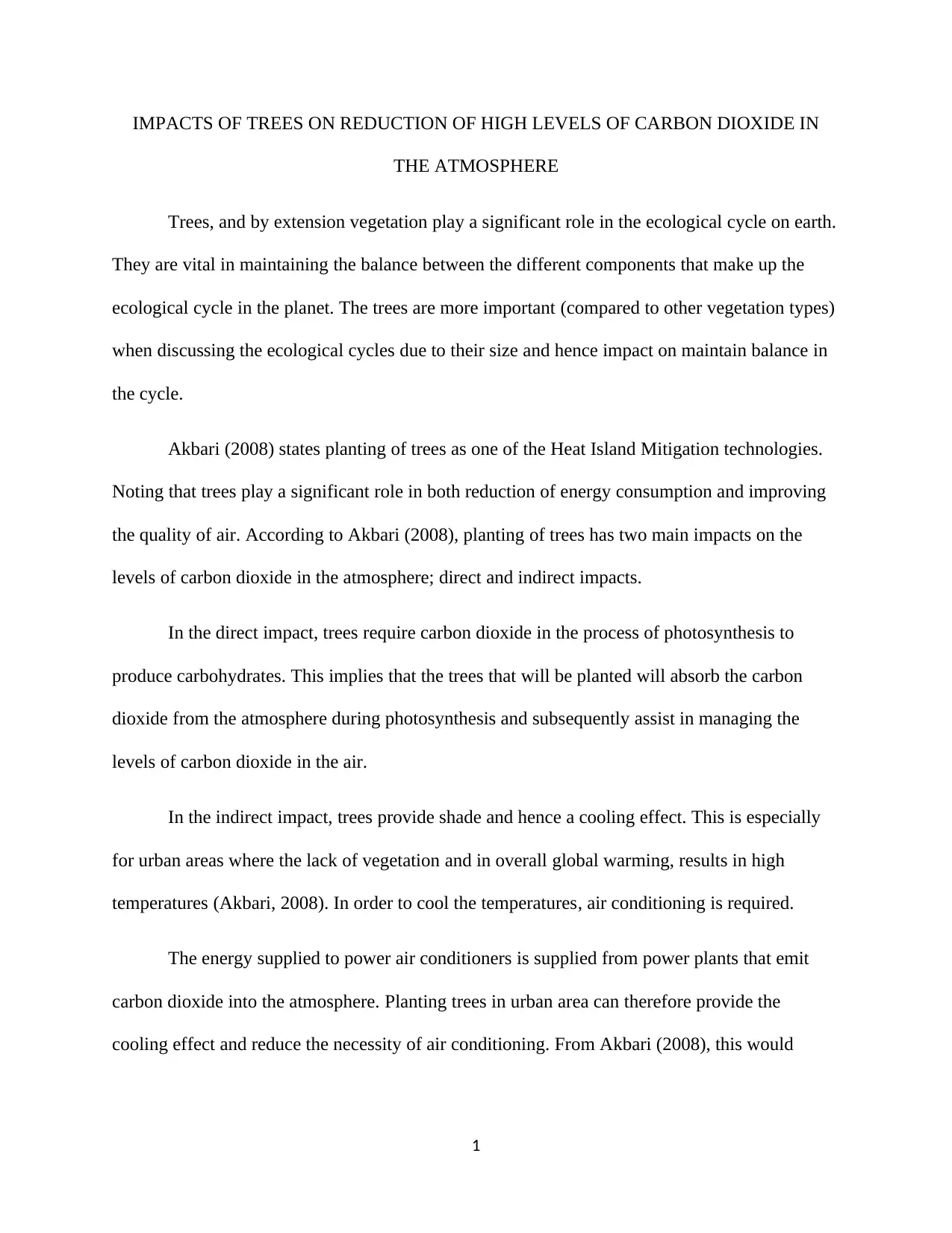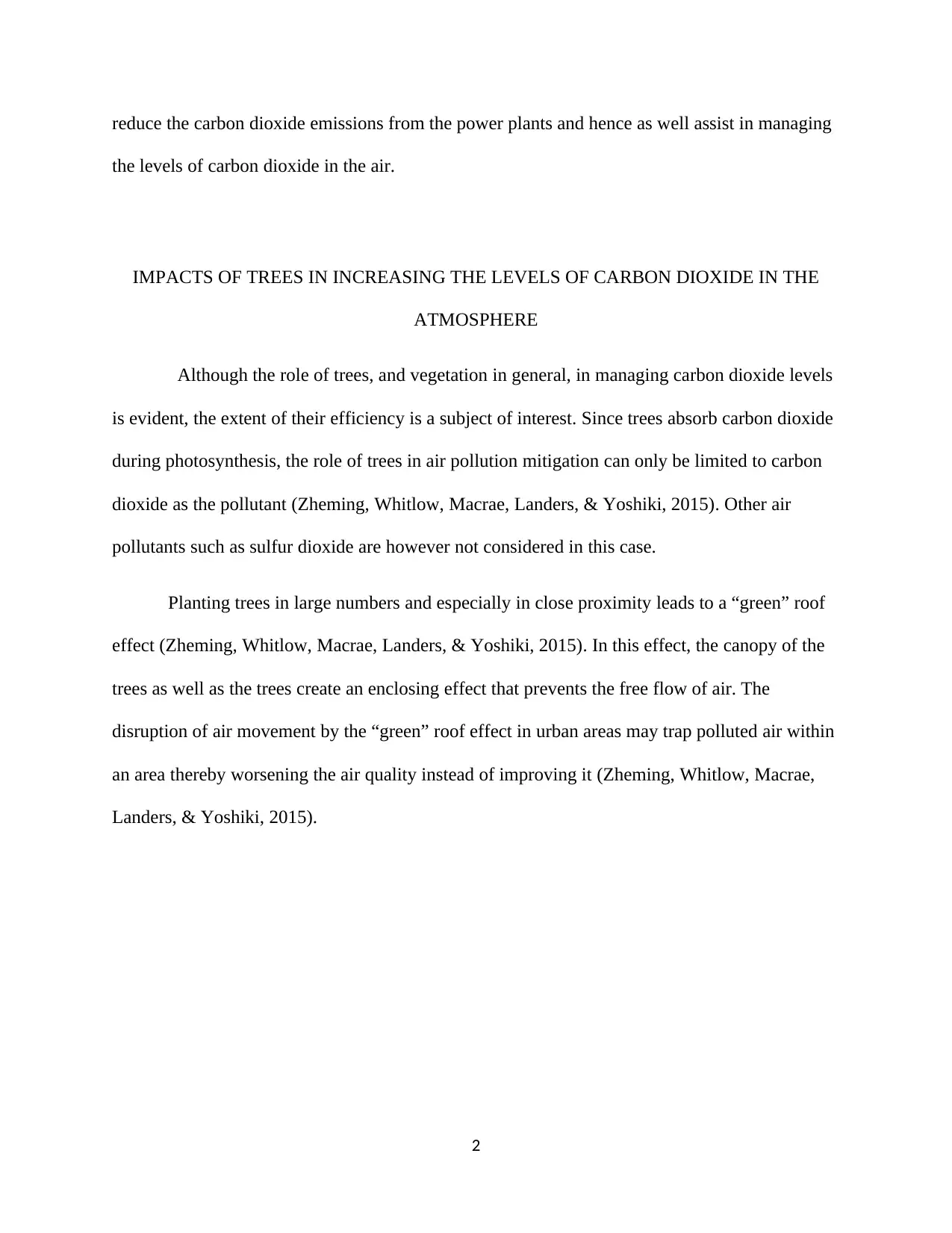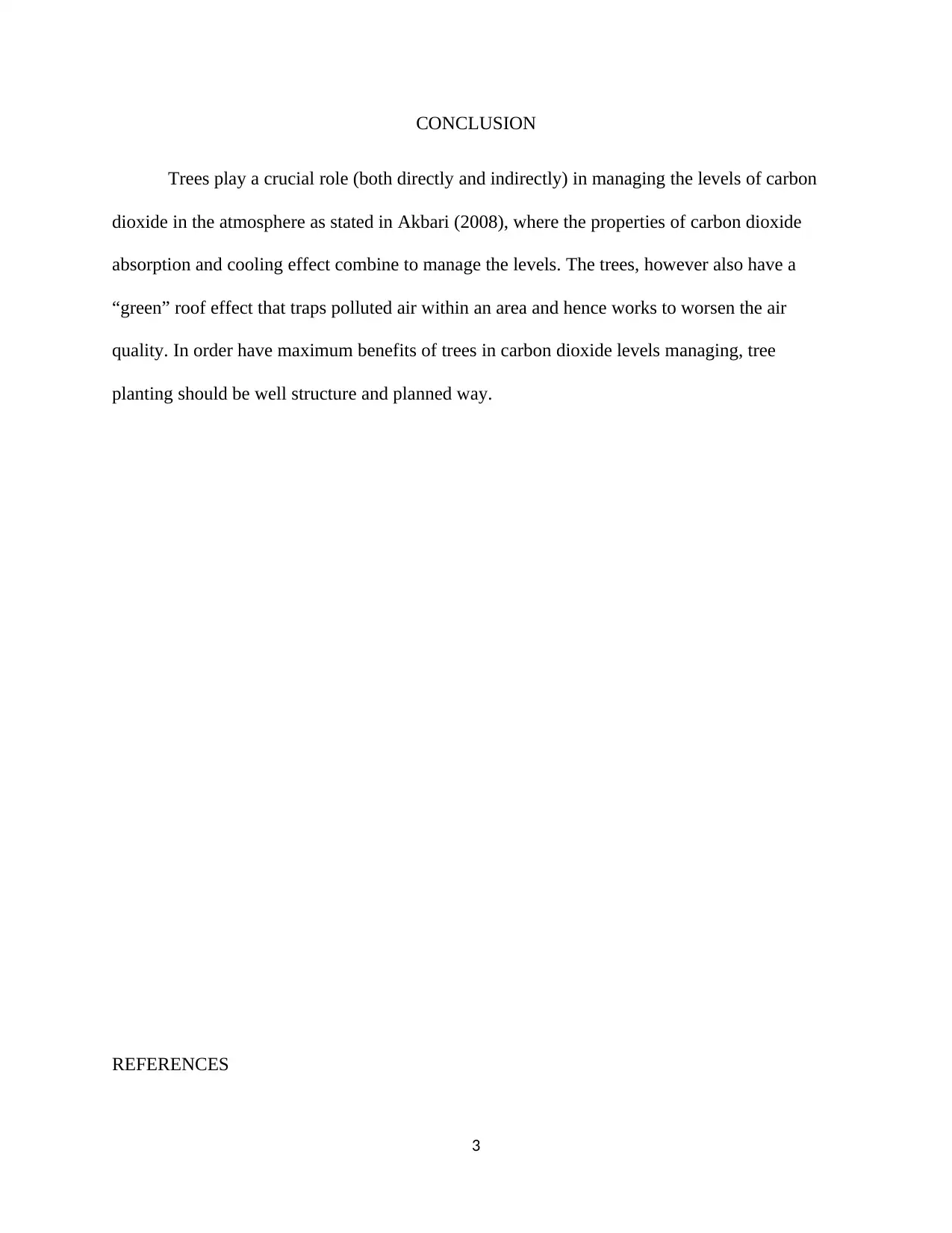Report: Trees' Role in Reducing Atmospheric Carbon Dioxide Levels
VerifiedAdded on 2023/04/21
|4
|707
|367
Report
AI Summary
This report investigates the multifaceted impacts of trees on atmospheric carbon dioxide (CO2) levels. It explores both the direct and indirect effects, referencing Akbari (2008) to highlight photosynthesis's role in CO2 absorption and the cooling effect trees provide, especially in urban areas, which reduces the need for energy-intensive air conditioning and thus lowers CO2 emissions. However, the report also acknowledges the "green roof effect," where dense tree canopies can trap polluted air, potentially worsening air quality, as discussed in Zheming et al. (2015). The conclusion emphasizes the need for structured and planned tree planting to maximize the benefits of trees in managing CO2 levels, balancing the positive impacts with potential negative consequences on air quality. The report utilizes scholarly sources, including Akbari (2008) and Zheming et al. (2015), to support its arguments.
1 out of 4










![[object Object]](/_next/static/media/star-bottom.7253800d.svg)